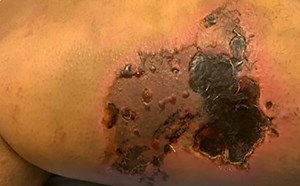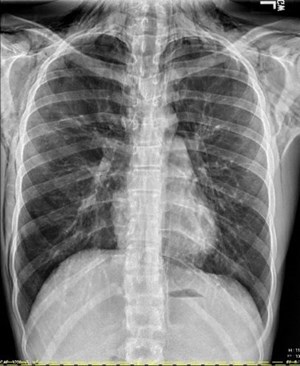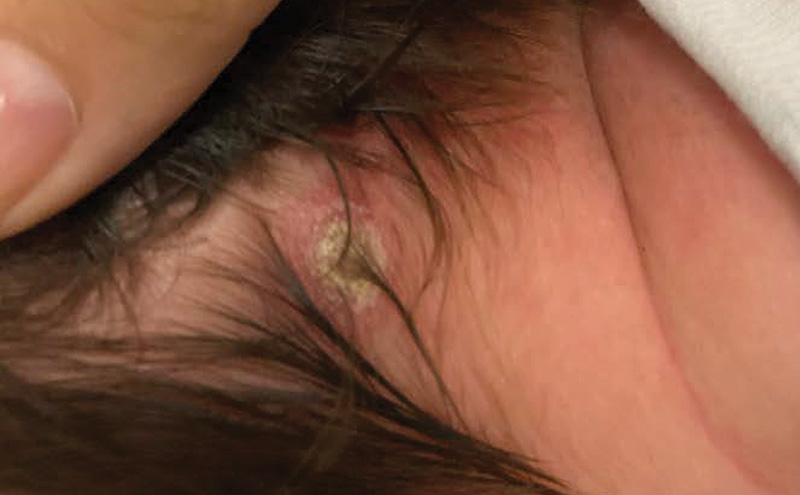
2nd Place Emage Winner: Head Scratcher
Amani Sanchez, DO
Jose Antonio Gonzales, MD
Tina Chu, MD
Dell Medical School at the University of Texas at Austin, Texas
A 6-week-old healthy female, born full-term via unremarkable vaginal delivery, presented to the emergency department (ED) with a scalp rash for 2 weeks. Her mother also had new bruising on her body. Pregnancy was remarkable for maternal chlamydia with confirmed cure, but other serologies were negative.
The infant’s examination in the ED demonstrated tachycardia and two dry scalp lesions on the crown of her head and one at the base of her neck. The differential diagnosis included congenital infection, Langerhans cell histiocytosis, seborrheic dermatitis, and herpes simplex virus. She was admitted for further evaluation.
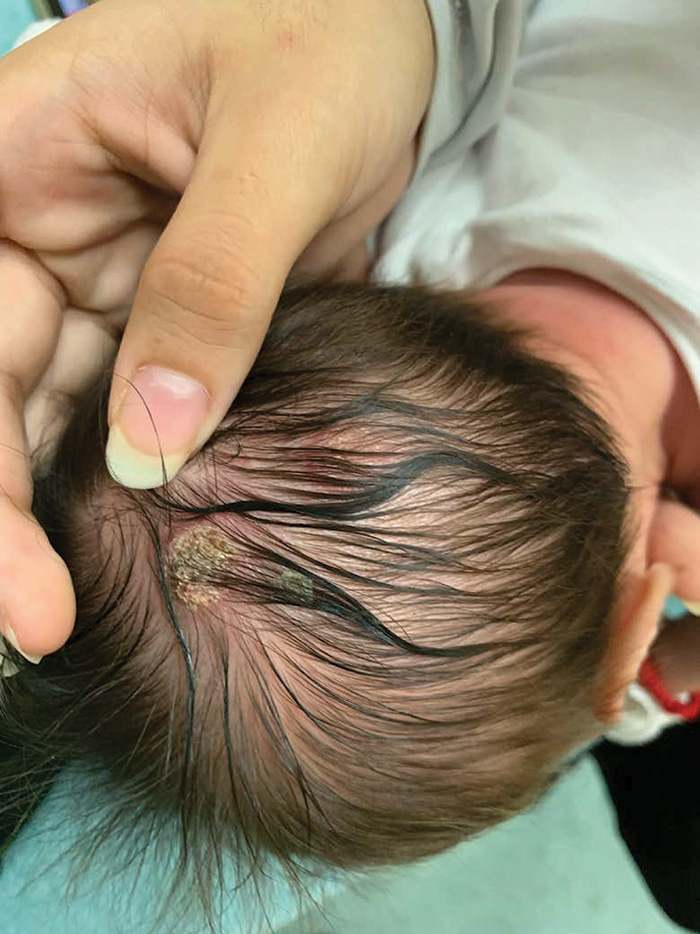
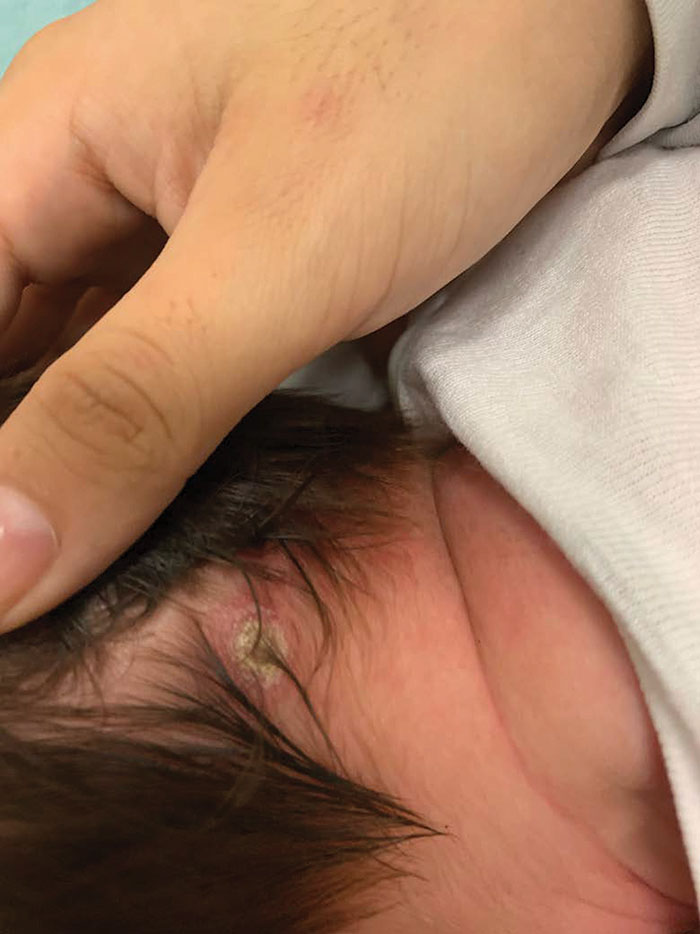
She underwent infectious workup, including culture of the lesions and cerebral spinal fluid (CSF) studies, which were negative, except for positive rapid plasma reagin (RPR) and microhemagglutination assay for antibodies to Treponema pallidum (MHA-TP), confirming syphilis. She had anemia, and x-rays showed tibia changes consistent with syphilis. Dermatology confirmed that her scalp lesions were consistent with syphilis.
She received 10 days of aqueous IV Penicillin G and was discharged home with near-resolution of her scalp lesions. Her mother was also evaluated and diagnosed with secondary syphilis, despite negative third-trimester RPR.
Congenital syphilis occurs when Treponema pallidum crosses the placenta during pregnancy or if an infant comes into contact with an infectious lesion. Infants can present with mucocutaneous lesions, hemolytic anemia, thrombocytopenia, hepatosplenomegaly, “snuffles” (copious nasal secretions), and long bone changes. The skin lesions and snuffles are highly infectious. Complete blood count (CBC), cerebral spinal fluid (CSF) analysis with venereal disease research laboratory (VDRL) test and basic CSF studies, and long-bone imaging should be obtained for infants with suspected syphilis. Highly probable or confirmed syphilis warrants further testing, neuroimaging, and ophthalmology evaluation. Treatment includes aqueous IV Penicillin G for at least 10 days.
Patients can develop frontal bossing, saddle nose, bony abnormalities, knee swelling, and perioral fissures. Some children develop “Hutchinson triad,” which is interstitial keratitis, eighth nerve deafness, and Hutchinson teeth (peg-shaped, notched central incisors).
References
1.American Academy of Pediatrics. Syphilis. In: Kimberlin DW, Brady MT, Jackson MA, Long SS, eds. Red Book: 2018 Report of the Committee on Infectious Diseases. 31st edition. 2018 [pp. 773-787]
2.American Academy of Pediatrics. Herpes simplex. In: Kimberlin DW, Barnett ED, Lynfield R, Sawyer MH (Eds). Red Book: 2021-2024 Report of the Committee on Infectious Diseases. 32nd edition. 2021. [p.407].
3.Frieden IJ. Aplasia cutis congenita: a clinical review and proposal for classification. J Am Acad Dermatol. 1986 Apr;14(4):646-60. doi: 10.1016/s0190-9622(86)70082-0. PMID: 3514708.
4.Heston S, Arnold S. Syphilis in Children. Infect Dis Clin North Am. 2018 Mar;32(1):129-144. doi: 10.1016/j.idc.2017.11.007.
5.Kim HY, Kim BJ, Kim JH, Yoo BH. Early congenital syphilis presenting with skin eruption alone: a case report. Korean J Pediatr. 2011;54(12):512-514. doi:10.3345/kjp.2011.54.12.512

